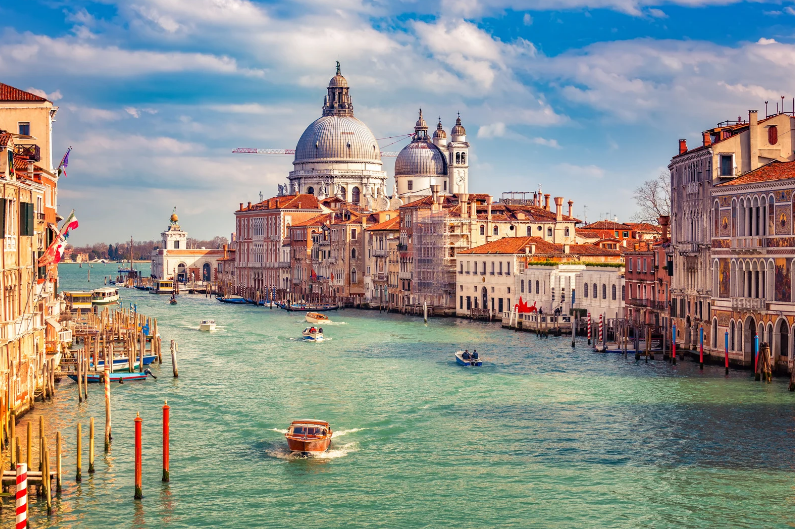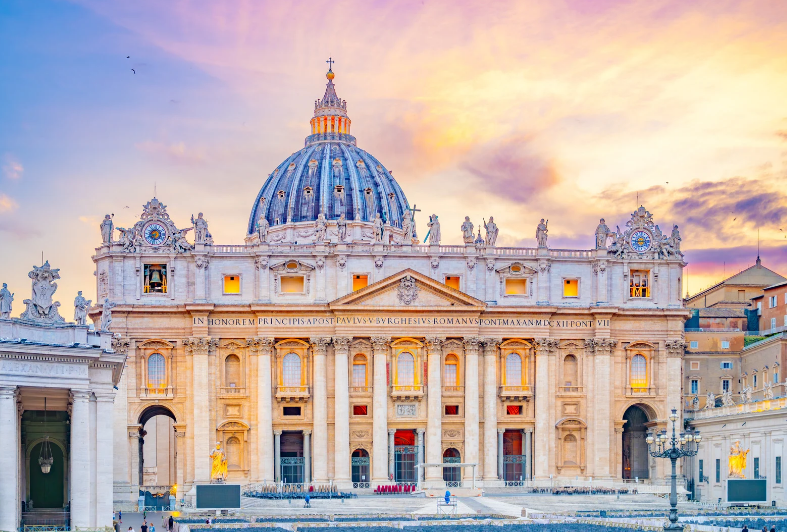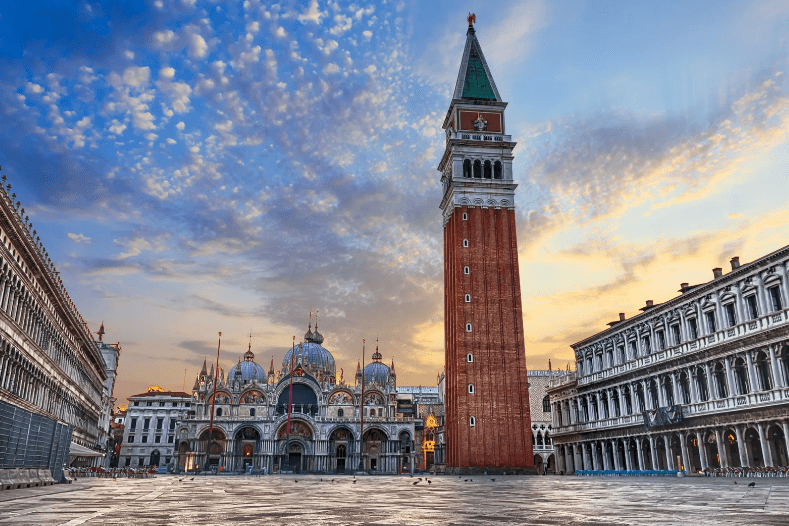Contents
- 1 Introduction
- 2 Exploring Italy’s Timeless Treasures: A Map of Marvels
- 3 Rome’s Ancient Jewel: Historic Centre of Rome, the Vatican, and San Paolo Fuori le Mura
- 4 Venice and Its Lagoon: City of Canals and Mystique
- 5 The Archaeological Area of Pompeii, Herculaneum, and Torre Annunziata
- 6 Florence: Cradle of the Italian Renaissance
- 7 Conclusion & Next Steps
- 8 Got questions about UNESCO World Heritage Sites in Italy? Here are the answers travelers look for most
Introduction
UNESCO World Heritage Sites in Italy are more than dots on a map—they are alive with stories, ancient secrets, and timeless beauty. Italy holds more UNESCO World Heritage sites than any other country. From the rolling hills of Tuscany to the echo-filled colosseums of Rome, each site blends history, art, and nature into something you can see, touch, and feel. Whether you love food, cities, or wide-open landscapes, these places offer a rare look at the very soul of Italy.
Why Italy Shines as a UNESCO World Heritage Destination

Italy is a superstar when it comes to UNESCO World Heritage Sites. The country has been a hotspot for painters, architects, emperors, and inventors throughout the centuries, showcasing three millennia of history. Each corner features Roman theaters, medieval castles, or ornate cathedrals, making it a captivating world heritage site. Cities like Florence and Venice shaped world culture during the Renaissance, while rural towns preserved traditions through food, crafts, and festivals. This rich heritage results in a patchwork of sites that tell different tales, each worth preserving for the future.
Italy also places great value on its old streets and buildings. The government and groups like FAI (the Italian National Trust) work hard to keep history alive. By teaming up with organizations like UNESCO, they protect precious places from weather, tourist crowds, and pollution, ensuring Italy remains a top UNESCO site and a popular tourist attraction.
What Makes a Site UNESCO-Worthy? Understanding the Criteria

Not just any place lands on the UNESCO list. The United Nations Educational, Scientific, and Cultural Organization (UNESCO) chooses sites based on strict guidelines. A place must have “outstanding universal value”—in other words, it needs to be special to everyone, not just locals.
There are ten criteria, but a site usually has to meet at least one. Here are the big ideas:
- Cultural significance: Think of ancient ruins, grand cathedrals, or towns where people still make pasta the way their great-grandparents did.
- Natural beauty or science: Parks, volcanoes, or rare habitats that are rare or show off the forces of nature.
- Historic importance: Places where something key happened in world history.
- Artistic or architectural brilliance: Amazing paintings, buildings, or city plans that set the standards.
Italy checks these boxes again and again, whether it’s with Michelangelo’s frescoes or the sparkling Dolomites. To protect a site, it must also be kept in good shape. Local leaders make plans to handle tourists, pollution, and climate threats.
Exploring Italy’s Timeless Treasures: A Map of Marvels

An Overview of Italy’s UNESCO World Heritage List
Italy’s UNESCO collection is wide and wonderful. As of now, there are over 55 sites on the list. They fall into three types: cultural, natural, and mixed.
- Cultural sites dominate. Think of Florence’s historic heart, Siena’s medieval squares, or Rome’s mix of ruins and Renaissance. These places shelter famous paintings, churches, and palaces.
- Natural sites include the jagged Dolomites, the Aeolian Islands with their volcanoes, and Monte San Giorgio’s fossil fields.
- Mixed sites blend wild places and human creativity, like the Vineyard Landscape of Piedmont.
Famous names pop up everywhere: the Uffizi, St. Mark’s Basilica, Pompeii, Cinque Terre. But there are smaller gems too, like the Trulli houses in Alberobello or the Byzantine mosaics in Ravenna.
Planning Your Route: Connecting the Dots Across Italy

Mapping out a visit to Italy’s UNESCO sites is like piecing together the ultimate puzzle. You can start in the north, south, or smack in the middle. Some regions cluster sites—Tuscany, for example, has Florence, Siena, Pisa, and the green hills of Val d’Orcia.
Here are some tips for plotting your adventure:
- Mix the city and the countryside. See major spots like Rome and Venice, but leave room for villages like Matera or the seaside towns of Cinque Terre.
- Travel by train when you can. Italy’s rail lines connect many UNESCO cities. High-speed trains whisk you from Florence to Milan or Naples in a couple of hours.
- Rent a car in rural regions. To reach places like the Dolomites or hidden abbeys, you’ll want more freedom to stop along the way.
- Check festivals. Many towns hold special events to celebrate their heritage, like Siena’s Palio horse race.
Using a map or official UNESCO guide apps can help link sites together. It’s easy to build a trip around a theme: art, Roman ruins, mountain views, or coastal gems.
Rome’s Ancient Jewel: Historic Centre of Rome, the Vatican, and San Paolo Fuori le Mura

Walking Amongst Emperors: The Colosseum and Roman Forum
The heart of Rome is like a giant time capsule. Walk along cobblestone paths and you’re moving through stories that go back thousands of years. The Roman Forum is where Julius Caesar spoke to crowds. A short stroll away, you’ll find the Colosseum—a favorite photo spot but more impressive in person. Built nearly two thousand years ago, its arches and stairways held up to 50,000 cheering fans. Today, you can stand in the shade and imagine gladiators below, wild animals, or crowds roaring.
Don’t miss Palatine Hill nearby. This leafy mound was home to emperors and looks down onto the whole city. Old columns and mosaics peek out between umbrella pines. Walking these ancient paths, you feel the mix of myth and real history.
Vatican City: St. Peter’s Basilica and the Sistine Chapel Frescoes

Tucked inside Rome, Vatican City is the world’s smallest country—and a mighty spot for culture. Whether you’re religious or not, St. Peter’s Basilica will leave you in awe. The church’s dome, designed by Michelangelo, rises above grand columns, while Bernini’s altar stands at its heart. As a cultural heritage site, it holds immense significance in the realm of world heritage sites.
Inside the Vatican Museums, halls twist through rooms filled with treasures by Caravaggio, Raphael, and da Vinci. At the end of your walk, you’ll reach the Sistine Chapel. Here, Michelangelo’s painted ceiling tells stories from Genesis with swirling colors and powerful figures. Many visitors stand in silence, overwhelmed by the vision above, a true testament to its status as a UNESCO World Heritage site.
A lesser-known gem is San Paolo Fuori le Mura, one of Rome’s ancient basilicas, set away from the crowds. Its golden mosaics shine just as brightly—proof that Rome’s spiritual strength stretches far beyond the Vatican’s walls, making it one of the top UNESCO sites in the city.
Venice and Its Lagoon: City of Canals and Mystique
The Grandeur of Piazza San Marco and Doge’s Palace

Few places can match the drama of Venice at dawn. The city greets each morning with light flickering on its canals. At the center lies Piazza San Marco, often called “the drawing room of Europe.” St. Mark’s Basilica gleams with golden mosaics. Besides it, the Campanile (bell tower) offers a sweeping view across spires and rooftops.
The Doge’s Palace is a palace of pink and white marble. Its stone carvings and grand halls once held the powerful Doges—Venetian nobles who ran a vast trading empire. Inside are paintings by Tintoretto and Veronese, wide staircases, and the spooky Bridge of Sighs. By boat, you can glide along the Grande Canal, passing palaces tinted by centuries of sun and sea air.
Protecting Venice: The Challenges of Rising Waters
Venice faces a constant threat—high waters, or “acqua alta.” Tides can send salty waves spilling into squares and homes. Scientists and city leaders have turned to technology, building barriers known as MOSE to keep the sea at bay. Still, the city watches the tides closely, and visitors often see raised walkways in use.
Preserving Venice means more than fighting floods. Pollution, heavy cruise traffic, and the shrinking population all pose challenges. UNESCO has pressured Italy to limit huge cruise ships and protect fragile buildings. Local groups teach kids about Venice’s traditions, from glassmaking to rowing, to keep the city’s spirit alive.
The Archaeological Area of Pompeii, Herculaneum, and Torre Annunziata

A Day in the Life: Stepping Back Into Ancient Roman Life
There’s nowhere like Pompeii. In 79 AD, Mount Vesuvius erupted and covered the Roman city in ash. Streets, homes, and even loaves of bread were frozen in place. Today, you can wander these old roads, peek into painted rooms with ancient graffiti, or see where bakers worked and families cooked. The city is a living page from history.
Nearby, Herculaneum was buried under mud and lava. It’s smaller but even better preserved. Delicate wooden furniture, colorful mosaics, and even food remains are on display. Torre Annunziata stands out for Villa Oplontis, a lavish villa thought to have belonged to Emperor Nero’s second wife, Poppea.
Rediscovering the Lost Cities: Stories from Archaeologists
The story of Pompeii’s rediscovery is full of wonder. Explorers first found pieces of the city in the 18th century, but digs continue even today. Experts from around the world, including those from the University of Naples and the British Museum, use modern tools to study bones, art, and gardens. Each season brings new finds, from playful mosaics to haunting plaster casts made from ancient voids in the ash.
Archaeologists now use drones, lasers, and scanners to map the city without digging too much. This keeps treasures safe and uncovers secrets lost for centuries. You might even spot a dig in progress if you visit in spring or fall, turning a simple tour into a history lesson unfolding in real time.
Florence: Cradle of the Italian Renaissance

Michelangelo, Leonardo, and the Birth of Genius
Florence feels like an outdoor museum. It’s the city where Michelangelo, Leonardo da Vinci, and Botticelli walked, painted, and changed the story of art forever. Florence’s Renaissance boom lit up Europe, bringing brave new ideas in science, painting, and architecture.
Visit the Accademia Gallery and meet Michelangelo’s David—a marble statue that seems to breathe. Walk by workshops where modern craftsmen still carve and paint. In old libraries, pages by Leonardo da Vinci hold wild sketches of flying machines and detailed studies of the human body.
It’s easy to imagine these artists meeting over a meal or drawing in candlelight. Florence’s genius is everywhere, painted in wide brush strokes and carved in white marble.
Strolling the Historic Centre: Duomo, Uffizi Gallery, Ponte Vecchio

In central Florence, the Duomo stands tall with its red-tiled dome, a marvel designed by Brunelleschi, making it one of the top UNESCO sites in Italy. Climb up for a thrilling view over the rooftops, where you can appreciate the breathtaking landscapes of the city. The Baptistery and bell tower complete this trio of beauty that defines Florence’s architectural heritage.
A short walk takes you to the Uffizi Gallery, a celebrated cultural heritage site. Here, Botticelli’s Venus, Caravaggio’s bright colors, and paintings from every era line the walls. The gallery is a treasure chest that inspires artists and dreamers alike, showcasing the rich heritage of Italian art.
Down by the Arno River, you’ll find the Ponte Vecchio. This stone bridge, crowded with jewelers, is one of Florence’s oldest crossings and a popular tourist attraction. Musicians and artists fill its corners every day, and as you stroll, you’ll feel the echoes of centuries past, with every sunny piazza or twisting alley holding another captivating world heritage site waiting to be seen.
Conclusion & Next Steps
Italy’s UNESCO World Heritage sites are more than photo-ops. They are living stories of art, history, architecture, and nature. We’ve explored icons like Rome’s historic centre, Venice and its lagoon, the ruins of Pompeii, and Florence’s Renaissance heart. These places together reveal why Italy tops so many travelers’ must-visit lists.
To make the most of your trip:
- Plan a route by region — group nearby heritage sites so you maximize time and minimize travel.
- Mix big cities with hidden gems, such as small towns and natural landscapes, for balance.
- Book ahead and go early, especially at Florence, Vatican, or Pompeii, to avoid crowds.
- Blend local culture and stories into your visit — knowing a bit of context (why a site is UNESCO-inscribed) transforms your experience.
- Track conservation and sustainability efforts, so your travel supports preservation of heritage sites.
If you’re writing a blog or itinerary guide, you can link to trusted sources (UNESCO, travel guides) or even use affiliate links for guided tours, hotels, or train passes — but only where it solves a problem (e.g. “best skip-the-line tour in Vatican”). Place those links inside helpful sections (e.g., “How to Visit Vatican”) so they feel natural.
May your next journey through Italy’s UNESCO sites be rich, inspiring, and unforgettable.
Got questions about UNESCO World Heritage Sites in Italy? Here are the answers travelers look for most
Q1: What are the most famous UNESCO World Heritage Sites in Italy?
Italy has many UNESCO World Heritage Sites, including Rome’s Historic Centre, Venice Lagoon, Florence, and Pompeii. These sites showcase Italy’s deep history, stunning architecture, and cultural influence worldwide.
Q2: How many UNESCO World Heritage Sites are in Italy?
Italy has over 50 UNESCO World Heritage Sites. This makes it one of the countries with the highest number of recognized cultural and natural treasures.
Q3: Why visit UNESCO World Heritage Sites in Italy?
Visiting UNESCO World Heritage Sites in Italy offers history, culture, and beauty. Each site tells stories of art, architecture, and traditions preserved for centuries.
Q4: Which UNESCO sites in Italy are best for first-time visitors?
First-time visitors should explore Rome’s Historic Centre, Venice, Florence, and Pompeii. These UNESCO World Heritage Sites in Italy highlight famous landmarks and timeless Italian culture.
Q5: Are there natural UNESCO World Heritage Sites in Italy?
Yes, Italy has natural UNESCO World Heritage Sites. The Dolomites, Mount Etna, and the Aeolian Islands showcase Italy’s stunning landscapes and geological importance.
Q6: What makes Italian UNESCO sites unique?
Italian UNESCO World Heritage Sites combine ancient ruins, Renaissance art, and natural wonders. They reveal Italy’s layered history and global impact on art, science, and culture.
Q7: Which UNESCO sites in Italy are least crowded?
Sites like Val d’Orcia, Alberobello, and the Sacri Monti are quieter. These UNESCO World Heritage Sites in Italy give peaceful, authentic cultural experiences away from heavy crowds.
Q8: Can you visit multiple UNESCO sites in one trip to Italy?
Yes, you can. Many UNESCO World Heritage Sites in Italy are near each other. Travelers can group Rome, Florence, and Pisa on one route.
Q9: What are the oldest UNESCO World Heritage Sites in Italy?
Rome’s Historic Centre, Pompeii, and the Amalfi Coast are among Italy’s earliest UNESCO World Heritage Sites. They reflect both ancient Rome and early recognition of heritage value.
Q10: How can travelers explore UNESCO sites in Italy responsibly?
Travelers can respect rules, avoid litter, and support local guides. Responsible tourism helps protect UNESCO World Heritage Sites in Italy for future generations.
Q11: Which Italian UNESCO site is best for art lovers?
Florence’s Historic Centre is perfect for art lovers. This UNESCO World Heritage Site in Italy highlights Renaissance art, architecture, and museums like the Uffizi Gallery.
Q12: What UNESCO sites in Italy are near Rome?
Near Rome, you’ll find Tivoli’s Villa d’Este, Villa Adriana, and Cerveteri. These UNESCO World Heritage Sites in Italy make excellent day trips from the capital.
Q13: Which UNESCO World Heritage Sites in Italy are family-friendly?
Pompeii, Alberobello’s Trulli houses, and the Dolomites are family-friendly UNESCO World Heritage Sites in Italy. They offer history, fun, and natural exploration for all ages.
Q14: How long should you spend at UNESCO sites in Italy?
Time varies. Some UNESCO World Heritage Sites in Italy, like Pompeii, need a full day. Others, like Alberobello, can be seen in a few hours.
Q15: What UNESCO sites in Italy are linked to the Renaissance?
Florence, Pisa, and Urbino are UNESCO World Heritage Sites in Italy tied to the Renaissance. They showcase art, science, and culture from this remarkable era.
Q16: Are UNESCO World Heritage Sites in Italy free to visit?
Not all are free. Some UNESCO World Heritage Sites in Italy, like Rome’s churches, are free. Others, like Pompeii, charge an entry fee.
Q17: Which UNESCO sites in Italy are good for photography?
Venice, the Amalfi Coast, Cinque Terre, and the Dolomites are perfect. These UNESCO World Heritage Sites in Italy offer dramatic, photo-worthy views.
Q18: Can you take guided tours at UNESCO sites in Italy?
Yes, guided tours are available at many UNESCO World Heritage Sites in Italy. Local guides help travelers understand history, architecture, and cultural meaning.
Q19: What UNESCO sites in Italy are great for food lovers?
The Amalfi Coast, Piedmont’s Vineyard Landscapes, and Naples are UNESCO World Heritage Sites in Italy where food and culture blend perfectly.
Q20: Which lesser-known UNESCO sites in Italy should travelers see?
Lesser-known UNESCO World Heritage Sites in Italy include Matera, Ferrara, and the Val d’Orcia. These places mix charm, history, and fewer tourists.


